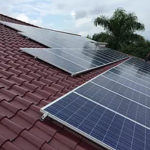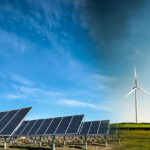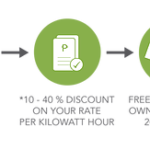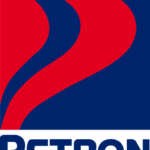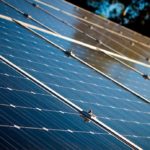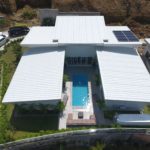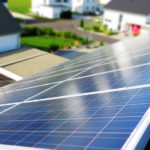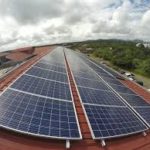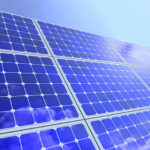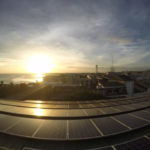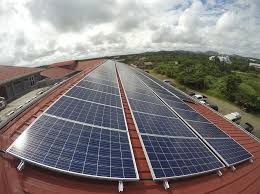
Quick Facts and Thoughts On-Grid Solar System
The title should probably be changed to “Quick Facts Within All My Thoughts…” Mainly because there are too many articles out there that are too lengthy and uninteresting to read for everyday people who aren’t in the solar field. There are words only “solar people” will understand. I want to make this a friendly read for all shapes and sizes. Let’s try a new approach to information dissemination. Let’s try the “Buzzfeed” approach.
I’ll be going through a more simplistic approach on explaining on a few topics pertaining to a relatively new technology to enter the country – solar power. I don’t know why it’s taken the Philippines this long to realize how useful this is for us, but at least we’ve started. We’ve got a long way to go on educating an entire nation on a technology that can provide us, and our frustratingly chaotic energy arrangement, with a more sustainable alternative.
HOW AN ON-GRID SOLAR POWER SYSTEM WORKS:
Basically, we’re connecting to an already existing power source (or as we call it, “the grid”). If you have a Meralco (or whoever your provider is) connection, then you can avail of this type of solar system.
We need two things to make it work: 1) the sun and 2) your “Meralco”. If you don’t have both, the solar pv system won’t work. And if you don’t know what “pv” means, it’s short for photovoltaic. If you don’t know what that means, please Google
So… NO it won’t work at night. And NO it won’t work during blackouts. Why? At night because… there’s no sun. And during blackouts, because the power from your Meralco will power up the inverter (the brain of the solar pv system). If you want to get more technical… it’s because the inverter will not have an existing voltage to replicate as reference for the power it converts from the solar panels. Its main job is not only to convert DC to AC, but ensure the solar power being produced gets priority distribution in your home. This is done through voltage manipulation. That way, you can get savings by using solar ahead of your Meralco power.
ADVANTAGES OF GRID-TIED SOLAR POWER:
Grid-tied and On-grid are the same, used interchangeably, because we want to confuse normal people more. But now you know, so you’re less confused.
Other than the savings mentioned earlier, there are other advantages to having an on-grid system. Enumeration starts now:
1. Reliable – should there be days of low solar production, there’s always your Meralco (I’m going to start calling it “utility” now) to fill in the gaps
2. Seamless – some clients don’t even believe their system is working because there is no temporary loss of power when switching from solar to utility, and vice versa.
3. Noise-free – to add, they don’t believe it because the system does not make noise. But trust, us, it’s working. It’s not like the sun makes noise that we can hear either.
4. Your part – yes, a cliché. But it’s true. You really are contributing in a small, yet effective way. In fact, this should not even be glamorized anymore. It should be expected that we do something, anything, to lessen our damage to Mother Earth.
5. I’m sure there’s more. Find out for yourself after your installation (yes… I’m trying to do a sales talk)
ON-GRID SOLAR POWER IN THE PHILIPPINES:
To be perfectly fair, we have come a long way. And to be perfectly blunt, we have a much longer way to go. There are countries thriving on just renewables (see Costa Rica), and there’s no doubt that we can do the same – in the future.
The move towards renewables is an obvious one that our generation and onwards have to take. We can no longer rely on powering up our machines, our factories, our homes, and our businesses solely on fossil fuels. We continued to survive these hundreds and thousands of years because of our ability as people to adapt to our environment, to adjust, and to innovate.
SAVING ELECTRICITY THROUGH GRID-TIED SOLAR PANELS:
Having On-Grid solar does not mean you disconnect from your utility (see Part 1 Paragraph 2). So how exactly do you save, if you’re still using your utility?
Immediate usage.
Solar power, due to the inverter, is used as priority power before utility. If you use solar power to power up a percentage of the home or business, then that percentage is saved. You use solar instead of buying that power from the utility.
ON-GRID VS OFF-GRID SOLAR PANELS:
The main difference is the presence of the utility. If you have a relatively reliable utility, then on-grid is the way to go. Many have asked us regarding wanting a completely off-grid system. We usually do not recommend this for buildings/households that have an available utility. Too much money will be spent on batteries (a technology that is still improving, especially here in the country. To give you an idea, it’s almost twice the amount to set up a system that includes batteries), unreliable consistent source of power (you never know when it will be cloudy or if there will be random rain showers, limiting the radiation available for the panels to convert), and it is more difficult to configure to be perfectly fit for the usage of the home or business. There’s more engineering that goes through an off-grid system.
Unless you live in a private island where the utility is non-existent, where you’re using a diesel generator to power everything, then the off-grid system might just be for you. Otherwise, the best solar system would be a grid-tied solar system.
HOW TO END THIS:
My word count is now 1007. Our SEO guy should be quite happy with this as he gave me a minimum of 800. Here’s to hoping this reaches the right people. And if you’re reading all the way through this, feel free to get in touch with us. We’ll be more than happy to accommodate. (I’m touched you finished the article – here’s my virtual hug).
Posted on February 21, 2017
This post was written by a g
Category: Uncategorized
